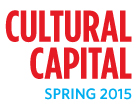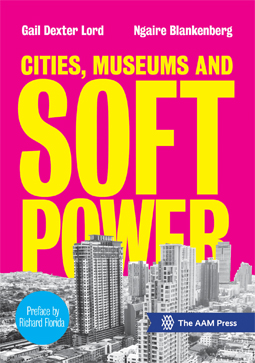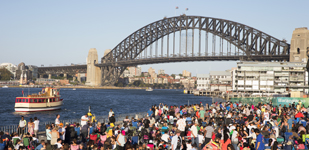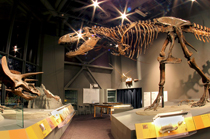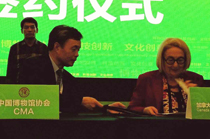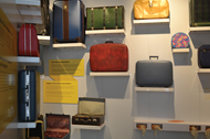 Richard Florida, Preface Richard Florida, Preface Cities, which house more than 50% of the world’s population and account for 80% of GDP, are starting to exercise influence on global issues like migration and sustainability, but could cities more effectively exercise their soft power by embracing museums?
|
|
 Hayfa Matar, Hayfa Matar,
Museums as Signifiers in the Gulf It takes courage to examine the vulnerabilities in our region, present them honestly and foster a dialogue with people, using the museum or art gallery as a platform... Museums and cultural institutions, if planned properly, can become the next Majlis: “a multigenerational area for dialogue and learning”.
|
|
 Batul Raaj Mehta, Unearthing the Genius Loci of Museums in the Indian Subcontinent Batul Raaj Mehta, Unearthing the Genius Loci of Museums in the Indian Subcontinent The recording-keeping of the colonial rulers, and their distance from the local culture, led to the genesis of Indian museums... In the past decade however, a few museums have begun embracing identities that respond to their own histories...probably from a need to express one’s distinctiveness in a world that is increasingly homogenized.
|
|
 Baillie Card, the Soft Power of Museums in the Knowledge Economy and Urban Development Baillie Card, the Soft Power of Museums in the Knowledge Economy and Urban Development
By combining forces, members of London’s Knowledge Quarter not only magnify their influence, but also change the terms of the national conversation around arts and culture to explicitly embed it in discussions of the knowledge economy... “framing the agenda”.
|
|
 An Laishun, Cranking Up the Soft Power Engine of Chinese Museums An Laishun, Cranking Up the Soft Power Engine of Chinese Museums The policy of free access to museums implemented in 2008 has enabled hundreds of millions of rural migrant workers and urban low-income people to experience museums. These new visitors account for a major proportion of the 500 million museum visitors annually.
|
|
 Robert PunkenhoferCultural Nomads: Creative People on the Road Robert PunkenhoferCultural Nomads: Creative People on the Road What if all the creative nomads—those who made the city the vibrant, diverse and entertaining area that attracted the rich and powerful in the first place—are driven out by the expensive cost of living?
|
|
 Gegê Leme Joseph, Museums in the Age of Brazilian Soft Power Gegê Leme Joseph, Museums in the Age of Brazilian Soft Power Given the ineffectiveness of wealthier institutions in reaching disadvantaged communities, and the success of social museums to achieve that same purpose... perhaps Brazilian museum professionals should start thinking outside the box about cross-institutional collaboration...
|
|
 Lourdes Fernandez, Global and Local: Fairs and Biennials, Temporary Urbanism and Pop-Up Museums Lourdes Fernandez, Global and Local: Fairs and Biennials, Temporary Urbanism and Pop-Up Museums There is a need now for new working models and relationships between institutions... Networking proposes the creation of a universal dossier, where all documents are shared... it enables museums to combine their expertise and exert long-lasting influence...
|
|
 Mohammed Gamal Rashed, Cairo and The Grand Egyptian Museum Mohammed Gamal Rashed, Cairo and The Grand Egyptian Museum
During the January 25th Revolution…young Egyptians formed a human shield in front of the museum to protect it from looting. This demonstrated to us the commitment of a new generation of Egyptians to our long heritage and proud history. It is now our turn, as museum professionals, to strengthen this relation.
|
|
 Javier Jimenez, Javier Jimenez,
the Economics of Museums and Cities Museums are among the most valuable, prestigious and frequented assets of cities... they directly contribute $21 billion to the U.S. economy each year and support 400,000 jobs. This represents more jobs than computer programming or civil engineering generate.
|
|
 Guido Guerzoni, Guido Guerzoni,
the Museum Building Boom A museum is not a hospital, a university or a court of law. It is a construction type that has taken upon and sometimes overloaded itself with meaning and expectations.
|
|
 Ngaire Blankenberg Ngaire Blankenberg
When Soft Powers Collide
“Open” museums, as with open cities, take this expectation seriously and are more successful at exercising soft power. Top-down museums with little local participation or relevance may be successful initially at attracting attention but ultimately will fail.
|
|
 Federica Olivares, Museums in Public Diplomacy Federica Olivares, Museums in Public Diplomacy The specific expertise of museums allows them to contribute to place-branding, enhancing or transforming the reputation and perceived image of cities and regions.
|
|
  Gail Dexter Lord and Joy Bailey Bryant, Gail Dexter Lord and Joy Bailey Bryant,
A Tale of Two Civil and Human Rights Cities
If need be, as in Atlanta and Winnipeg, cities will invent new museums and new cultural institutions to shape and convey the stories they need to tell. Sometimes subversive, sometimes supportive of national policies, the soft power of cities and their museums has the potential to change our world in the 21st century.
|

